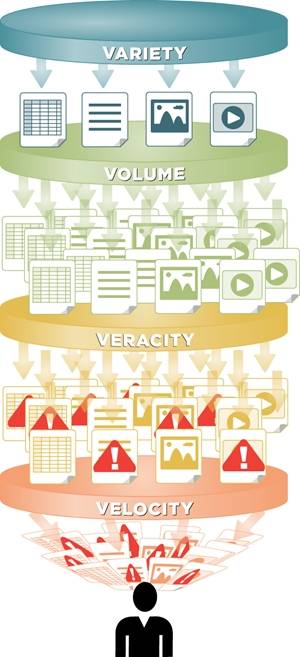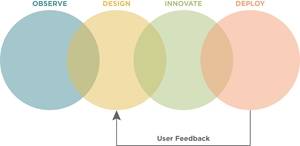
Analytic Modeling allows analysts to more easily visualize and collaborate on complex intelligence data sets.
We live in a world of ever-increasing data. Sensors, satellites, cameras, radars, location-aware devices and even social media contribute to the 2.5 quintillion bytes of data that are created every day.
 As the amount of data intelligence analysts receive increases every day, the methods they use to transform data into actionable intelligence must evolve.
As the amount of data intelligence analysts receive increases every day, the methods they use to transform data into actionable intelligence must evolve.At first glance, these new and increased sources of data are a boon for the Intelligence Community. Never before have we had so much information about so many people, places, things and activities.
However, there is a downside to this deluge of data. The Intelligence Community relies upon analysts to reliably turn information into actionable intelligence. And with lives often on the line, that intelligence needs to be delivered in timely manner. With that information streaming in at unprecedented rates from a wide range of disparate sources, analysts face an uphill battle against the challenges of variety, volume, velocity and veracity, known in the industry as the Four Vs. As the amount of data increases exponentially every day, without a new and novel way to analyze it, the Four Vs run the risk of becoming a distraction at best and overwhelming at worst.
Its clear that with data itself changing, the way in which analysts transform that data into intelligence must also change. Its time for an evolution in intelligence analysis.
Analytic Modeling Thats Built For The Analyst
An Analytic Model is a visualization of what the analyst does and does not know. Its this idea of visualization that is key for collaboration and context and its that collaboration and context that will enable the automation to ultimately create the efficiencies needed in todays analytic space.
General Dynamics Mission Systems uses Human Centered Design to create an Analytic Modeling capability that overcomes data overload and collapses the current silos of information that plague the tradecraft today. This capability creates a digital environment that allows multiple agencies to engage with one another, securely sharing information and enabling automated processes that ultimately make the analysts job easier and the entire organization more efficient.
“The collaborative, integrated platform provided by General Dynamics Analytic Modeling platform allows intelligence analysts to securely share their perspectives, hypotheses and conclusions with peers in other locations and across multiple agencies. Although their perspectives may be different, the power of sharing and validating hypotheses enables a high-context, collaborative collection-canvas, making each analyst more efficient.– Mike Manzo, director of Geospatial Intelligence for General Dynamics Mission Systems
We approach Analytic Modeling with the primary goal of meeting the needs of the intelligence consumer. That means engaging analysts to influence the form, fit and function of the capability. As a leader in the Human Centered Design process, our team begins by employing Human Centered Design principals to derive a list what an analyst needs from the model. A combination of interview, over the shoulder observation, concept decomposition, brief-backs, data analysis, and active listening allows us to identify inherent information and collaboration needs to deliver a user experience and user interface optimized for the needs of the analyst.
Analysts Need A Flexible Capability, Not Another Tool
 General Dynamics’ Human Centered Design process puts the needs of the analyst at the center of our Analytic Modeling approach.
General Dynamics’ Human Centered Design process puts the needs of the analyst at the center of our Analytic Modeling approach.General Dynamics believes analysts dont need to be burdened with another tool. Advancing the Analytic Modeling tradecraft requires not a tool, but a capability. A tool implies an off-the-shelf product with pre-defined parameters and restraints. A product meant to be used by any customer regardless of their unique needs.
Our team approaches Analytic Modeling as an evolving capability – a whole new way of thinking about intelligence analytics.
With our Analytic Modeling platform, analysts are now able to seamlessly and securely share information and collaborate. The platforms digital environment allows analysts, data scientists, and technologists to compare hypotheses, submit questions in real-time, and fill-in data gaps. This eliminates the time-consuming report generation and multiple lengthy conversations previously needed to report on hypotheses or communicate results.
Now, analysts need only ask a question and get real-time answers, creating a more efficient analysis process.

